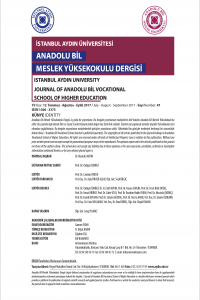Arazi değerlendirmesinin prensipleri ve niteliği
Arazi kullanımları hakkındaki kararlar toplumda ve bilim dünyasında uzun zamandır tartışılmakta ve değerlendirilmektedir. Geçmişte, arazi kullanımı daha basit ihtiyaçlara yanıt verme çabası içinde, daha az kompleks politik, sosyal ve ekonomik süreçler eşliğinde şekillenmiştir. Bugünün daha kalabalık ve karmaşık dünyasında ise genellikle arazi kullanım planının süreçleri çerçevesinde kararlar alınmaya çalışılmaktadır. Bu planlar özellikle gelişmiş ve gelişmekte olan ülkeler ile tüm dünyayı kapsayacak şekilde geliştirilmeye çalışılmaktadır. Bu da doğal kaynakların koruma-kullanma bağlamında yeniden değerlendirilmesinin önünü açmıştır. Bu bağlamda, kullanımlar arası rekabet, değişen ihtiyaçlar ve çeşitli kaynaklı baskılar değerlendirme içinde önemli bir yer tutmaktadır. Arazi değerlendirmesi, arazinin spesifik amaçlar için kullanıldığındaki performansının değerlendirilmesi ile ilgilenir. Bu da topografya, jeolojik özellikler, iklim, toprak, hidrolojik özellikler, flora-fauna ve diğer arazi kullanımları içinde etkili olan faktörler gibi temel faktörlerin yorumlanması ve değerlendirilmesi süreçlerini gerektirir. Planlamada başarılı olmak için, alanda düşünülen arazi kullanımlarının fiziksel, ekonomik ve sosyal bağlamda ortaya koyacakları sonuçlar ve ilişkileri düşünülmeli ve sınırlar belirlenmelidir. Bu çalışmada öncelikle arazi kullanımına temel teşkil eden karar süreçlerinde en önemli etken olan arazi değerlendirmesi süreci irdelenmiştir. Arazi değerlendirmesinin prensipleri ortaya konularak, niteliği, kullanılan metotlar ve yaklaşımlar belirlenmiştir.
Anahtar Kelimeler:
Arazi değerlendirmesi, , arazi kullanımı, , arazi kullanım planı, , doğal kaynak yönetimi
Principles and characteristics of the land evaluation
Decisions on land use have been discussed and evaluated in society and the
scientific community for a long time. In the past, land use has been shaped by less
complex political, social and economic processes in an effort to respond to simpler
needs. In today’s more crowded and complex world, decisions are generally
made within the framework of the land use plan processes. These plans are being
developed to cover especially the developed and developing countries and the
whole world. This has paved the way for the re-evaluation of natural resources
in terms of conservation and utilization. In this context, competition between
uses, changing needs and various sourced pressures play an important role in
the evaluation. Land evaluation deals with the evaluation of the performance of
the land when it is used for specific purposes. This requires the interpretation
and evaluation of key factors such as topography, geological characteristics,
climate, soil, hydrological characteristics, flora-fauna and other land-use
factors. In order to be successful in planning, the results and relationships of
land use in the physical, economic and social context should be considered and
limits should be determined. In this study, first of all, land evaluation process,
which is the most important factor in decision making processes which are
the basis of land use, is examined. The principles of land evaluation were put
forward and the quality, methods and approaches used were determined.
Keywords:
Land assessment, , land use, , land use plan, , natural resource management,
___
- [1] Bouma, J., Stoorvogel, J. J., & Sonneveld, M. P. W. (2011). Land evaluation for landscape units. In Handbook of Soil Sciences: Properties and Processes, 2nd ed. (pp. Chapter-34). CRC Press/Taylor & Francis.
- [2] Diener, E., & Suh, E. (1997). Measuring quality of life: Economic, social, and subjective indicators. Social Indicators Research, 40(1-2), 189- 216.
- [3] Duning, X., Linsheng, Z. (1998). Ecological principles of landscape classification and assessment. [J]. Chinese Journal of Applied Ecology, 2.
- [4] Dumanski, J., Pieri, C. (2000). Land quality indicators: research plan. Agriculture, Ecosystems & Environment, 81(2), 93-102.
- [5] FAo, A. (1976). Framework for Land Evaluation. FAO Soils Bulletin, 32.
- [6] Foley, J. A., DeFries, R., Asner, G. P., Barford, C., Bonan, G., Carpenter, S. R., ... & Helkowski, J. H. (2005). Global consequences of land use. Science, 309 (5734), 570-574.
- [7] George, H. (2005). An overview of land evaluation and land use planning at FAO. FAO (ed.). Rome, Italy: FAO.
- [8] Hansen, W. G. (1959). How accessibility shapes land use. Journal of the American Institute of planners, 25(2), 73-76.
- [9] Kaiser, E. J., Godschalk, D. R., & Chapin, F. S. (1995). Urban land use planning (Vol. 4). Urbana, IL: University of Illinois press.
- [10] Loveland, T. R., Reed, B. C., Brown, J. F., Ohlen, D. O., Zhu, Z., Yang, L. W. M. J., & Merchant, J. W. (2000). Development of a global land cover characteristics database and IGBP DISCover from 1 km AVHRR data. International Journal of Remote Sensing, 21(6-7), 1303-1330.
- [11] Smith, J. H., Stehman, S. V., Wickham, J. D., & Yang, L. (2003). Effects of landscape characteristics on land-cover class accuracy. Remote Sensing of Environment, 84(3), 342-349.
- [12] Stocking, M. A., & Murnaghan, N. (2013). A handbook for the field assessment of land degradation. Routledge.
- ISSN: 1306-3375
- Başlangıç: 2006
- Yayıncı: İstanbul Aydın Üniversitesi
Sayıdaki Diğer Makaleler
Sinemada özel efekt kullanımının tarihi ve gelişimi
Türkiye’de yeşil bina sertifikasyon sistemleri
Ezgi YILMAZ, Süleyman BALYEMEZ
Arazi değerlendirmesinin prensipleri ve niteliği
Cephe iskelesi kullanımında Fine-Kinney yöntemiyle risk değerlendirme uygulaması
